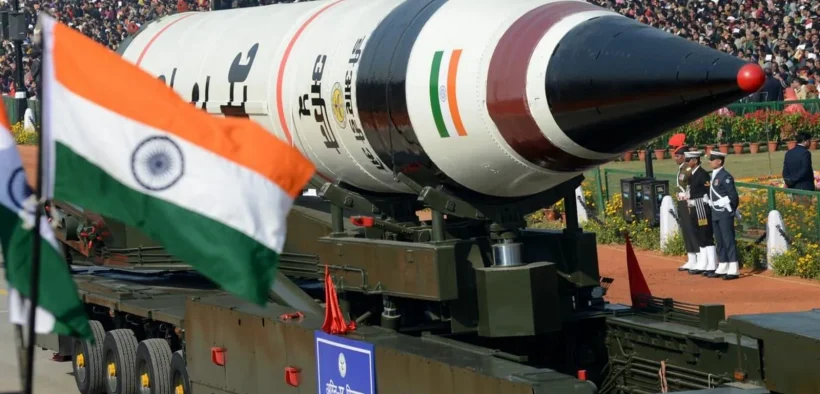India’s Defence Research and Development Organisation (DRDO) is working on an advanced bunker-buster variant of the Agni‑V ICBM, armed with a 7,500 kg conventional warhead capable of penetrating 80–100 meters of reinforced earth or concrete before detonation.
Advertisements

Unlike the nuclear-tipped Agni‑V with a 5,000 km-plus range, this conventional version sacrifices range—around 2,500 km—for destructive underground reach, propelled at hypersonic speeds between Mach 8–20, and deployable via canister-launchers optimized for mobile road and rail platforms.
Two specific warhead configurations are under development:
-
A deep-penetration version mirroring the U.S. GBU-57 Massive Ordnance Penetrator (MOP), intended to obliterate buried command and control centres, missile silos, and nuclear storage facilities.
-
An airburst variant, targeting exposed infrastructure like runways, radars, and surface buildings.
This initiative aligns with global trends inspired by June 2025’s U.S. “Operation Midnight Hammer,” where B-2 bombers dropped GBU‑57 bunker-busters on Iran’s hardened facilities at Fordow, Natanz, and Isfahan.
The Agni‑V bunker-buster adds a strategic conventional strike option, crucial for neutralizing underground installations in adversary nations like Pakistan and China, without crossing the nuclear threshold. It significantly expands India’s stature as a missile power amid hypersonic arms development, enhancing deterrent credibility with deep-penetration precision, high mobility, and rapid strike capability.
However, it also raises important strategic questions. Pakistan has voiced concern, warning that the missile’s dual-use nature could blur lines between conventional and nuclear launches, increasing risk of miscalculation during crises.
In summary, India’s bunker-buster Agni‑V reflects a sophisticated leap in conventional deterrence—hypersonic, hard-target capable, and geopolitically significant—reshaping military calculus in South Asia.


